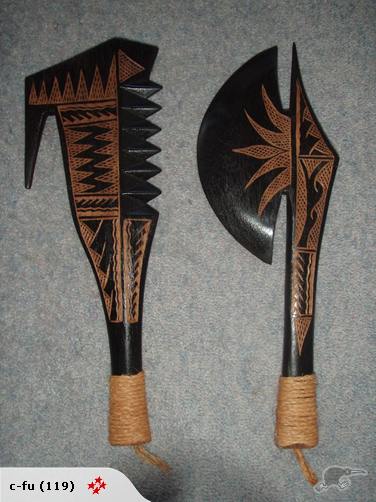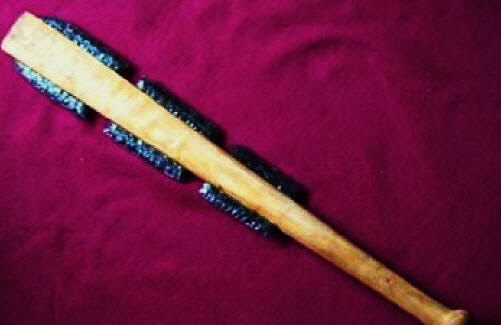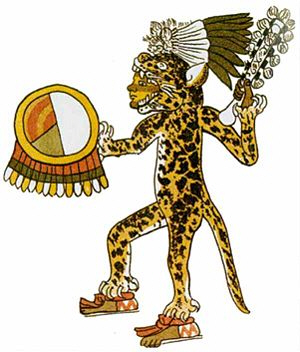Posts: 416 Location: Auckland, New Zealand
Mon 11 Aug, 2008 2:39 am
Yeah... Wahaika are awesome weapons. They are very rarely made into tourist-item versions like other Patu are, showing the reverence Maori have for them. I have heard that Maori warriors using Wahaika sought each other out on the battlefield, and fought battles as a series of duels.
I wish it was possible to accurately describe the techniques possible with a Patu. I have fought a few guys who use wooden Mere, with a mujian, a simple wooden pole and a bokken, and despite the obvious differences in length, they invariably close the gap and actually give you a light crack on the skull.
They do have a lot of ritual placed on footwork, which I think actually takes away from the overall effectiveness, but the techniques are awesome, and particularly powerful with a stone Patu.
Some very limited explanation:
http://www.tki.org.nz/r/arts/dance/discover_d...nres_e.php
Some more Patu, mostly stone - from Te Papa Tongarewa (The Museum of New Zealand), in Wellington:
http://collections.tepapa.govt.nz/Search.aspx...;term=Patu
I wish this one, which is quite good, was slightly more in-depth, information-wise... please excuse the price tags!
http://www.giftsnz.com/weapons.htm
I am thinking I might have to get a actual Maori Taiaha fighter to come onto the thread and explain properly. I'll see what I can do...




